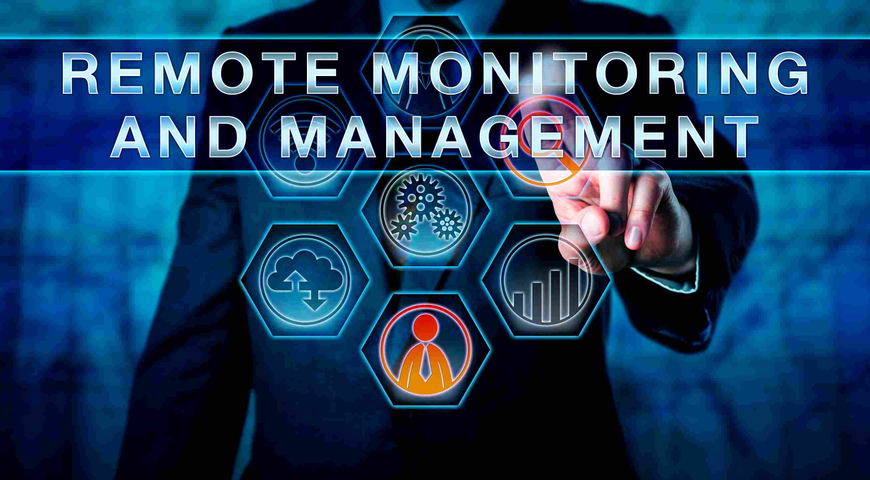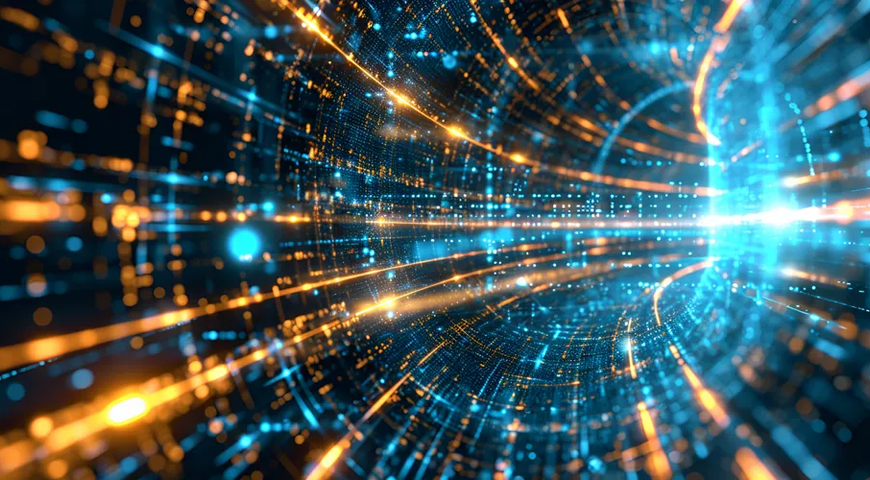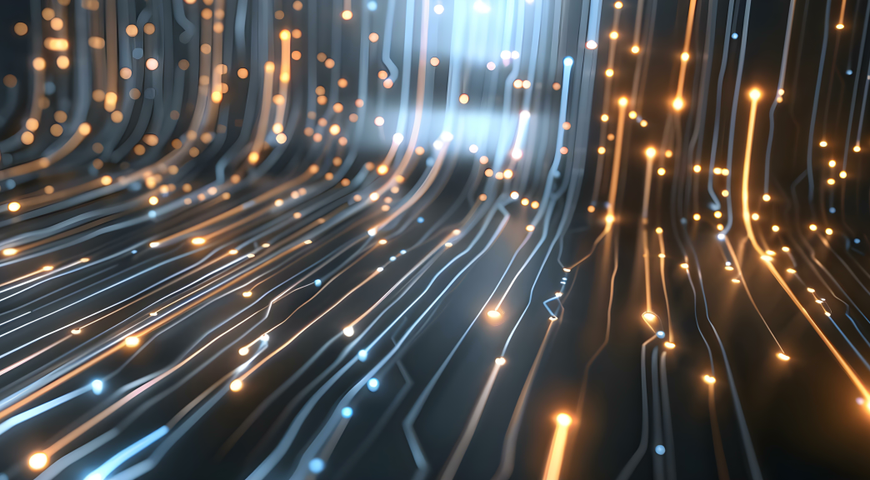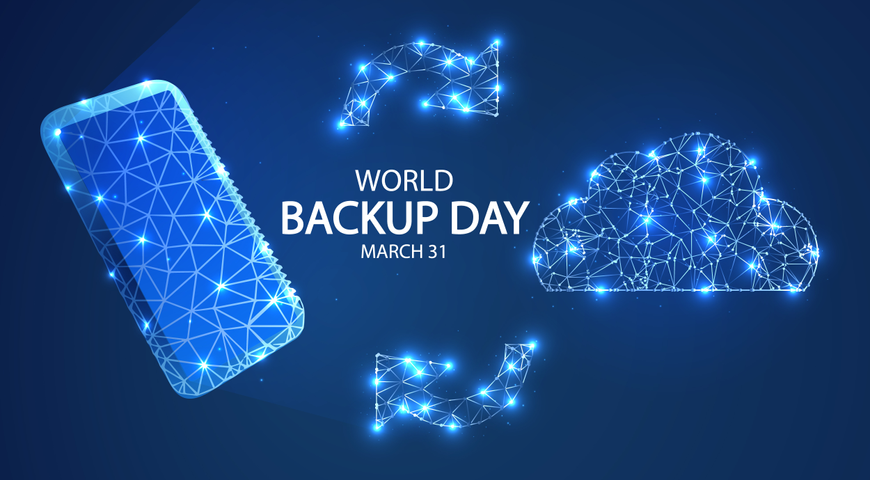
What is RMM? Remote monitoring and management (RMM) has become an indispensable tool for Managed Service Providers (MSPs) and enterprise IT departments, streamlining operations and enhancing service delivery. RMM allows IT professionals to monitor clients' network infrastructure remotely, ensuring systems are running smoothly and efficiently.
This technology not only enables proactive maintenance and issue resolution but also provides comprehensive insights into network performance. In this article, we'll explore what RMM means to your organization, including its key features, and the significant benefits it offers to MSPs and other IT professionals.
What this article will cover:
● What is RMM software?
● Core components of an RMM solution.
● Key features of RMM tools.
● The benefits of using RMM.
● How does RMM work?
● Using RMM in different IT environments.
● Popular RMM tools on the market.
● Challenges of implementing RMM.
● Future trends in RMM.
● RMM best practices.
● Security considerations with RMM.
● Frequently asked questions (FAQ).
What is RMM?
Core components of an RMM solution
Monitoring
- Agent software: Installed on client devices, agents collect data and execute commands.
- Centralized dashboard: Provides a unified view of the IT environment for real-time monitoring.
- Automated alerts and notifications: Generates alerts for issues like hardware failures and security threats.
- Reporting and analytics: Offers insights into system performance and trends.
Management
- Remote access and control: Enables remote troubleshooting, software installation, and maintenance.
- Patch management: Manages software updates and patches across all devices.
- Asset and inventory management: Tracks hardware and software assets, managing licenses and warranties.
- Scripting and automation: Automates routine tasks to save time and reduce manual effort.
- Security management: Monitors for security threats and ensures compliance with security policies.
- Backup and recovery: Facilitates data backups and quick recovery in case of data loss.
Key features of RMM tools
1. Automation capabilities
Automated tasks and scripts streamline routine processes, reducing manual effort and minimizing errors.
The ability to schedule maintenance activities, such as software updates and system cleanups, ensures consistent system performance without manual intervention.
2. Reporting and analytics
- Performance reports are generated to monitor the health and efficiency of IT systems, providing insights into areas that need improvement.
- Predictive analytics are used to forecast potential issues and trends, enabling proactive measures to prevent problems before they occur.
3. Integration with other tools
- Compatibility with existing systems in the IT infrastructure allows for smooth integration and efficient operation without significant changes to the current setup.
- Integration with customer relationship management (CRM) and ticketing systems to streamline workflows, improve customer service and enhance overall operational efficiency.
The benefits of using RMM software
● Proactive issue resolution: RMM software enable IT professionals to identify and address potential problems before they escalate, minimizing downtime and enhancing system reliability.
● Increased efficiency: Automation of routine tasks, such as updates and maintenance, frees up time for IT staff to focus on more strategic activities, improving overall productivity.
● Cost savings: By preventing major issues and reducing the need for on-site visits, RMM helps in lowering operational costs and optimizing resource allocation.
● Enhanced security: Continuous monitoring and automated patch management ensure that systems are always up to date and protected against vulnerabilities and cyberthreats.
● Improved service delivery: With real-time monitoring and rapid issue resolution, IT professionals can provide better service to clients, leading to higher satisfaction and retention rates.
● Comprehensive reporting: Detailed reports and analytics offer insights into system performance and trends, aiding in informed decision making and strategic planning.
● Scalability: RMM tools can easily scale to accommodate growing IT infrastructures, making it suitable for businesses of all sizes.
● Centralized management: A single dashboard provides a unified view of the entire IT environment, simplifying management and oversight of multiple devices and networks.
● Remote access: Enables IT professionals to manage and troubleshoot devices from any location.
● Compliance and auditing: Automated tracking and reporting help ensure compliance with industry regulations and standards.
How does an RMM solution work?
Installation and setup
- Deploy agent software: Install agent software on client devices. These agents collect and transmit data back to the central RMM system.
- Configure monitoring parameters: Set up parameters and thresholds for monitoring system health, performance and security.
- Integrate with existing systems: Ensure compatibility and integrate the RMM tool with existing IT infrastructure, including CRM and ticketing systems.
- Initial baseline assessment: Perform an initial assessment to establish a performance baseline and identify any immediate issues that need resolution.
Day-to-day operations
- Real-time monitoring: Continuously monitor client devices and networks for performance metrics, security threats and system health.
- Automated alerts and notifications: Receive automated alerts for any anomalies or issues detected by the agent software.
- Remote access and troubleshooting: Access client devices remotely to troubleshoot and resolve issues promptly without the need for on-site visits.
- Task automation: Automate routine tasks such as system cleanups, software installations, and configuration changes to maintain system efficiency.
- Generate reports: Produce regular reports on system performance, security status and compliance metrics to keep stakeholders informed.
Maintenance and updates
- Patch management: Automatically deploy software updates and patches to all monitored devices to ensure they are up to date and secure.
- System optimization: Perform regular maintenance tasks, such as disk defragmentation and registry cleanups, to optimize system performance.
- Backup and recovery: Manage data backups and ensure rapid recovery options are available in case of system failures or data loss.
- Review and adjust monitoring parameters: Periodically review and adjust monitoring thresholds and parameters based on evolving needs and performance trends.
- Continuous improvement: Analyze performance reports and predictive analytics to identify areas for improvement and implement necessary changes to enhance overall IT operations.
Using RMM software in different IT environments
1. RMM for enterprise systems
In enterprise environments, RMM tools are deployed across a vast number of devices and locations. This ensures consistent monitoring and management of the entire IT infrastructure, providing centralized control and oversight.
RMM facilitates coordination between different IT teams by providing a unified platform for monitoring and managing systems. This enhances communication, streamlines workflows, and ensures that all teams are aligned in maintaining optimal system performance.
2. RMM for small and medium businesses (SMBs)
For SMBs, RMM offers a cost-effective way to manage IT resources without the need for a large in-house IT team. These solutions often come with scalable pricing models, making them affordable for businesses with limited budgets.
SMBs can leverage third-party managed service providers who use RMM tools to deliver comprehensive IT support. This enables SMBs to benefit from professional IT management and monitoring without significant upfront investments.
Use-case for RMM in a corporate IT environment
A midsized manufacturing company faced challenges in managing its IT infrastructure spread across multiple locations. Frequent system downtimes and security vulnerabilities were impacting productivity.
The company implemented an RMM solution to monitor and manage their IT assets remotely. The RMM tool was integrated with their existing systems and configured to monitor critical parameters.
Implementation
● Deployment: Agent software was installed on all devices, and monitoring parameters were set up.
● Automation: Routine tasks such as software updates and system cleanups were automated.
● Remote access: IT staff could access and troubleshoot devices remotely, significantly reducing response times.
Results
● Reduced downtime: Proactive monitoring and rapid issue resolution led to a 40% reduction in system downtimes.
● Enhanced security: Automated patch management and real-time alerts improved the overall security posture.
● Cost savings: By automating routine tasks and reducing the need for on-site visits, the company saved approximately 25% on IT maintenance costs.
This case study illustrates the tangible benefits of using RMM tools, highlighting how they can improve efficiency, security and cost-effectiveness across different environments.
Popular RMM tools
Acronis Cyber Protect Cloud
● Integrated backup and security: Combines RMM with backup, patch management, and cybersecurity features.
● Automation and management: Wide range of automation and management capabilities.
● Comprehensive protection: Offers advanced threat detection and prevention.
● Scalability: Suitable for businesses of all sizes.
● Agile: A great choice for enterprise or MSP users.
● Complexity: Can be complex for small or single-person IT teams to deploy.
● Cost: May be on the higher end of the price spectrum for very small organizations.
SolarWinds N-central
● Robust feature set: Includes automation, patch management and extensive monitoring capabilities.
● Scalability: Designed to handle large-scale deployments.
● Customizable dashboards: Highly customizable interface to fit specific needs.
● Learning curve: Can be difficult to learn for new users.
● Cost: Higher pricing, especially for smaller organizations.
ConnectWise Automate
● Powerful automation: Strong focus on automation and scripting capabilities.
● Integration: Seamlessly integrates with other ConnectWise products.
● Scalability: Effective for MSPs managing multiple clients.
● Complexity: Can be overwhelming for small teams due to its extensive features.
● Support: Some users report slow customer support response times.
Kaseya VSA
● All-in-one solution: Combines RMM, patch management, and endpoint security.
● Automation: Strong automation features to streamline IT operations.
● Remote control: Excellent remote access and control capabilities.
● User interface: Some users find the interface outdated and not user friendly.
● Performance: Occasional performance issues and slowdowns reported by users.
NinjaOne (formerly NinjaRMM)
● User-friendly interface: Intuitive and easy to navigate.
● Fast deployment: Quick and easy to set up.
● Excellent support: Highly rated customer support and service.
● Feature limitations: May lack some advanced features compared to other tools.
● Cost: Can be expensive for larger deployments.
Challenges of implementing RMM software and tools
● Initial setup and configuration of RMM tools can be complex and time consuming, especially for businesses with limited IT resources. Ensuring compatibility with existing systems and properly configuring monitoring parameters requires technical expertise.
● The cost of RMM solutions, including licensing fees and potential hardware upgrades, can be significant. Smaller businesses may find it challenging to justify the investment, especially if they have limited budgets.
● Integrating RMM tools with existing IT infrastructure, such as CRM and ticketing systems, can pose challenges. Ensuring seamless integration without disrupting current operations requires careful planning and execution.
● IT staff need to be adequately trained to use RMM tools effectively. Ensuring all team members are proficient with the new system can take time and effort, potentially delaying the benefits of the implementation.
● As businesses grow, their IT infrastructure becomes more complex. Ensuring that the RMM tool can scale effectively to handle increased demands and more devices can be a challenge, requiring ongoing adjustments and potential upgrades.
● RMM tools access sensitive data and systems remotely, raising concerns about data security and privacy. Implementing robust security measures to protect against unauthorized access and potential breaches is critical.
● The reliability and support provided by the RMM vendor can significantly impact the success of the implementation. Choosing a vendor with a solid reputation and responsive support services is essential to address any issues that arise.
Future trends in RMM solutions
AI integration
● Enhanced automation: AI will boost RMM automation, reducing human intervention and improving efficiency.
● Intelligent monitoring: AI can analyze data in real-time, identifying patterns and anomalies for more accurate issue detection.
● Personalized alerts: AI creates alerts that prioritize issues based on impact, focusing IT professionals on critical problems.
● Self-healing systems: AI-driven RMM tools enable systems to automatically fix issues, reducing downtime.
Predictive maintenance
● Proactive issue prevention: Predictive maintenance anticipates and addresses issues before failures occur.
● Optimized resource allocation: Plans maintenance effectively, reducing unexpected downtimes.
● Cost savings: Prevents issues, reducing repair costs and extending IT asset lifespan.
● Improved system performance: Ensures systems run efficiently, enhancing reliability.
Integration with IoT
● Expanded monitoring capabilities: RMM tools will monitor both IT and IoT devices.
● Unified management platforms: Provides a holistic view of the network.
Advanced security features
● AI-driven threat detection: Enhances threat detection and mitigation in real time.
● Automated response: Allows automatic response to security incidents.
These trends will make RMM more efficient, reliable and secure, helping businesses manage complex IT landscapes.
7 RMM best practices
- Regular monitoring and updates: Continuously monitor systems and ensure all software and firmware are up to date to maintain security and performance.
- Automate routine tasks: Use RMM tools to automate routine maintenance tasks such as patch management, backups, and system cleanups to save time and reduce errors.
- Proactive issue resolution: Configure alerts to identify and address issues before they escalate, minimizing downtime and preventing potential disruptions.
- Comprehensive documentation: Maintain detailed documentation of all monitored systems and procedures to ensure consistency and aid in troubleshooting.
- Secure remote access: Implement robust security measures for remote access, including multifactor authentication (MFA) and encrypted connections, to protect against unauthorized access.
- Regular reporting and analysis: Generate and review regular performance reports to gain insights into system health and identify trends or potential areas for improvement.
- Customize monitoring parameters: Tailor monitoring settings to the specific needs and priorities of your organization or clients.
Security considerations with RMM
- Secure remote access: Ensure that remote access to client devices and networks is secured with strong authentication methods such as multi-factor authentication (MFA) and encrypted connections (e.g., VPNs, SSL / TLS).
- Data encryption: Encrypt all data transmitted between the RMM tool and client devices to protect sensitive information from interception and unauthorized access.
- Access controls: Implement strict access controls to limit who can access and manage the RMM tool. Assign roles and permissions based on the principle of least privilege to minimize security risks.
- Regular patch management: Keep the RMM service software and all connected systems updated with the latest patches and security updates to protect against known vulnerabilities.
- Threat detection and response: Utilize RMM tools with integrated threat detection capabilities to identify and respond to security threats in real time. Ensure the tool can automate responses to mitigate risks quickly.
- Audit and logging: Enable comprehensive logging and auditing features to track all activities within the RMM tool. Regularly review logs to detect and investigate any suspicious behavior.
- Endpoint security: Ensure that all endpoints monitored by the RMM tool have up-to-date antivirus, anti-malware and other security measures in place to prevent data breaches.
- Regular security assessments: Conduct regular security assessments and vulnerability scans on the RMM infrastructure to identify and address potential weaknesses.
- User training: Train all users and IT staff on security best practices, including recognizing phishing attempts and safe handling of sensitive information.
- Backup and recovery: Implement robust backup and disaster recovery plans to ensure data can be quickly restored in the event of a security breach or system failure.
Remote monitoring and management FAQ
What is the difference between RMM and traditional IT management?
RMM tools allow IT professionals to monitor and manage IT systems remotely and proactively. They provide real-time data, automate routine tasks, and offer centralized control through a single dashboard. RMM enhances efficiency by identifying and addressing issues before they become critical, reducing the need for on-site visits.
Traditional IT management relies heavily on manual processes and on-site intervention. IT staff physically visit each device or location to perform maintenance, troubleshoot issues and deploy updates. This approach can be time consuming and less efficient, often resulting in longer downtime and delayed problem resolution.
How does RMM improve cybersecurity?
● Proactive monitoring: RMM continuously monitors systems for suspicious activities and potential security threats, enabling early detection and swift action to mitigate risks.
● Automated patch management: RMM tools automatically apply security patches and updates to all connected devices, ensuring systems are protected against known vulnerabilities.
● Threat detection: Advanced RMM tools include integrated threat detection capabilities, using AI and machine learning to identify and respond to security threats in real time.
● Secure remote access: RMM tools provide secure remote access to devices, reducing the need for physical visits and ensuring secure connections through encryption and multifactor authentication.
What are the costs associated with implementing RMM?
Most RMM tools require a subscription or licensing fee, which can vary based on the number of devices managed and the features included. Initial setup and configuration of RMM tools may require a significant investment in time and resources, particularly for large or complex IT environments. IT staff may also need training to effectively use the RMM tool, which can involve additional costs. Finally, ongoing maintenance and regular updates of the RMM tool itself may incur costs, ensuring the system remains secure and functional.
Can MSPs benefit from RMM?
Yes, MSPs can significantly benefit from RMM. Consider these advantages:
● Increased efficiency: Automating routine tasks and monitoring client systems remotely allows MSPs to manage more clients with the same resources.
● Proactive service: RMM enables MSPs to identify and resolve issues before they impact clients, improving service quality and client satisfaction.
● Scalability: RMM tools help MSPs scale their operations efficiently, managing a growing number of client devices without a proportional increase in workload.
● Enhanced security: Continuous monitoring and automated patch management enhance the security of client systems, reducing the risk of breaches.
What are the potential downsides of RMM software?
Implementing and configuring RMM tools can be complex, requiring technical expertise that smaller organizations might lack. The initial investment and ongoing costs can be significant, potentially limiting accessibility for budget-conscious businesses. IT staff may need time and training to become proficient, temporarily impacting productivity. The effectiveness of RMM tools relies on the vendor's support; poor support can hinder performance and usability. Additionally, RMM tools access sensitive data, raising privacy and security concerns. Ensuring robust security measures and regulatory compliance is essential.
Summing it up: RMM solutions
Remote Monitoring and Management (RMM) tools like Acronis Cyber Protect Cloud have become indispensable for modern IT management, offering enhanced efficiency, proactive issue resolution, and robust security features. While there are challenges in implementation, such as complexity and costs, the benefits far outweigh these obstacles.
By adopting automation solution to your routine tasks, providing real-time monitoring, and integrating advanced technologies like AI and predictive maintenance, RMM tools allow IT professionals to manage systems more effectively. As businesses continue to grow and evolve, adopting RMM solutions will be crucial in maintaining optimal IT performance and security, ensuring a competitive edge now and into the future.
About Acronis
A Swiss company founded in Singapore in 2003, Acronis has 15 offices worldwide and employees in 50+ countries. Acronis Cyber Protect Cloud is available in 26 languages in 150 countries and is used by over 21,000 service providers to protect over 750,000 businesses.



